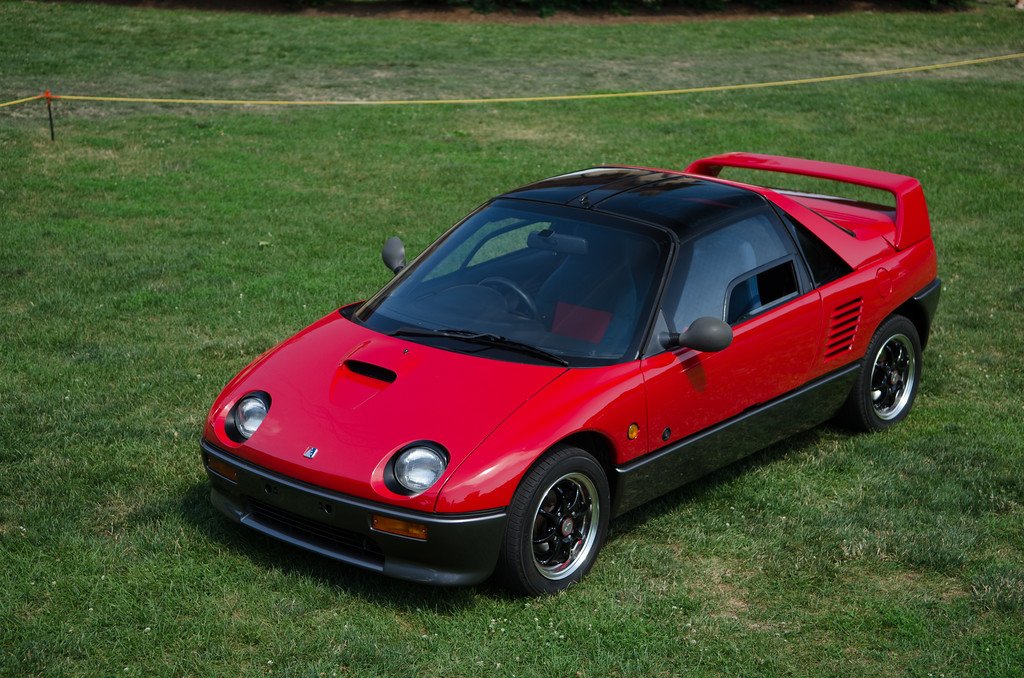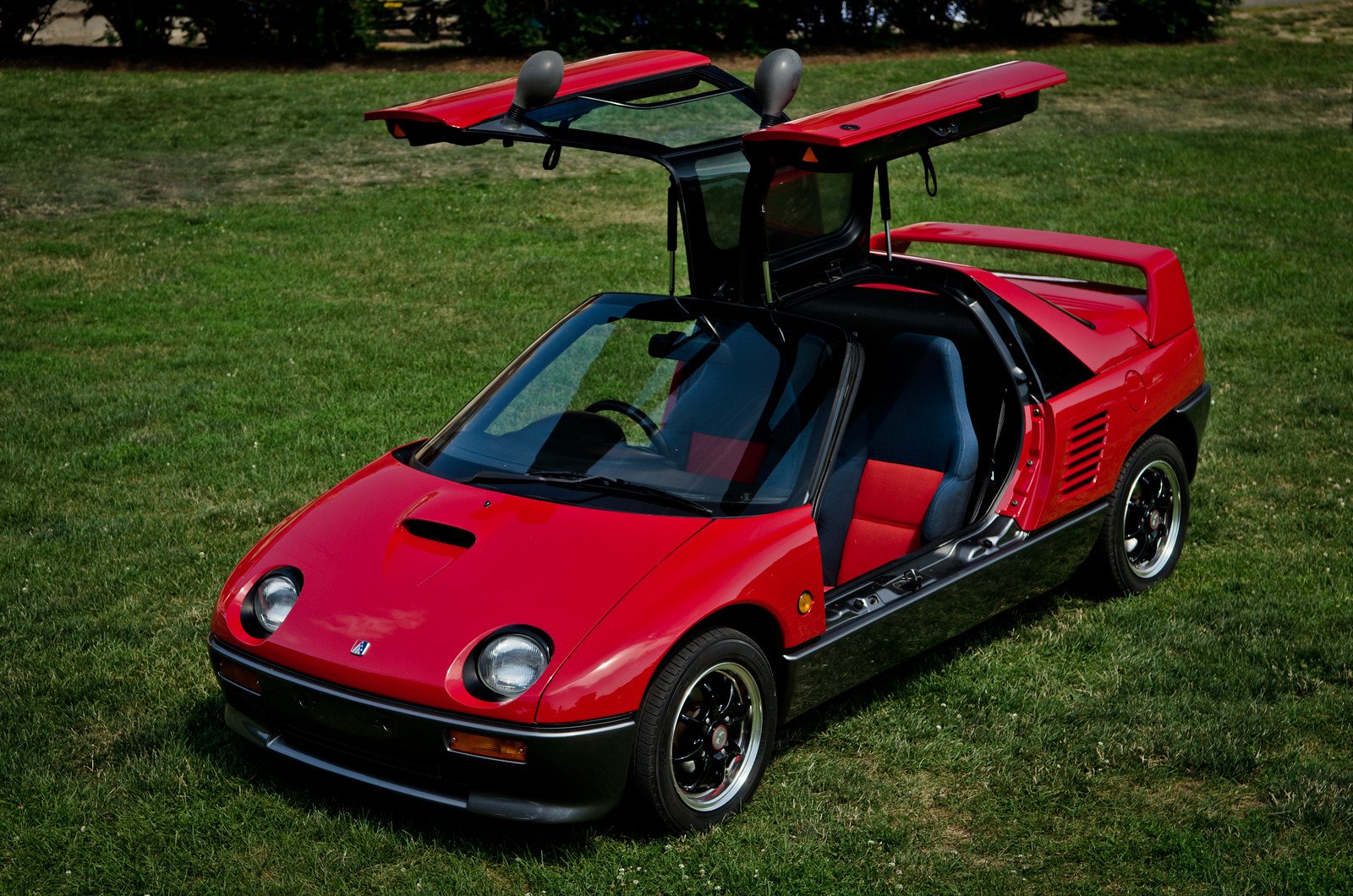1992 Autozam AZ-1
Generously Lent by Neal Heffron





Photos Courtesy of Joshua Sweeney/ Shoot for Details
Kei class car produced by Suzuki under the Autozam brand, part of the larger Japanese automaker Mazda.
Only 4300 were produced.
Futuristic design, spirited performance, and cult following has made it a classic among enthusiasts.
The Kei category was created by the Japanese government in 1949, to stimulate both car ownership and growth of Japan's car industry. Kei car is the smallest category of Japanese, expressway-legal motor vehicles. 'Kei' is diminutive for kei-jidōsha, (kanji: 軽自動車), or "light automobile" (pronounced [keːdʑidoːɕa]). With restricted dimensions and engine specifications, owners benefit firstly from lower taxes and insurance rates. And in most rural areas, importantly, they were also exempted from the general Japanese shako shōmeisho (車庫証明書) parking-space ownership requirement to legally buy a motor vehicle at all, as street parking is generally restricted in Japan. Japan's carmakers also make microvans and kei trucks within this legal category. [Wikipedia]
The Honda Beat, Suzuki Cappuccino, and Autozam AZ-1 were contemporary Kei sports car competitors.
The Autozam AZ-1 is a unique and iconic sports car that holds a special place in automotive history. Produced by Suzuki under the Autozam brand, which was a part of the larger Japanese automaker Mazda, the AZ-1 was unveiled at the 1989 Tokyo Motor Show. Its futuristic design, compact size, and mid-engine layout immediately captured the attention of enthusiasts and critics alike.
The development of the AZ-1 began in the late 1980s, during a period of economic prosperity in Japan known as the "bubble economy." This era saw an explosion of creativity and innovation in various industries, including automotive manufacturing. Suzuki, looking to expand its lineup and tap into the growing demand for small, sporty cars, collaborated with other Japanese automakers to develop the AZ-1.
One of the most notable partnerships was with Yamaha, which played a significant role in the design and engineering of the AZ-1. The car's distinctive styling, characterized by its gull-wing doors and futuristic exterior, was the result of Yamaha's expertise in motorcycle design and aerodynamics. The sleek, wedge-shaped body, low profile, and aggressive stance gave the AZ-1 a striking appearance that set it apart from other cars of its time.
Under the hood, the Autozam AZ-1 was powered by a turbocharged, 657cc inline-three-cylinder engine, producing around 64 horsepower. While this might seem modest by today's standards, the AZ-1's lightweight construction and mid-engine layout ensured that it delivered an exhilarating driving experience. Paired with a five-speed manual transmission, the AZ-1 offered sharp handling, responsive steering, and nimble performance, making it a joy to drive on both city streets and winding mountain roads.
Despite its impressive performance and unique design, the Autozam AZ-1 had a relatively short production run. It was introduced to the Japanese market in 1992, but production ceased just two years later in 1994, with only around 4,300 units built. The limited availability of the AZ-1, combined with its cult following among enthusiasts, has made it a rare and sought-after collector's item in the years since.
Part of the AZ-1's appeal lies in its exclusivity and cult status. Its small production numbers, distinctive design, and high-performance capabilities have earned it a dedicated fanbase around the world. In recent years, the AZ-1 has become increasingly popular among collectors and automotive enthusiasts, with well-maintained examples commanding high prices on the used car market.
The Autozam AZ-1's legacy extends beyond its role as a sports car; it represents a bygone era of automotive innovation and experimentation. In an industry dominated by mass-produced, practical vehicles, the AZ-1 dared to be different, pushing the boundaries of design and performance. Its influence can be seen in modern sports cars and supercars, which continue to prioritize agility, aerodynamics, and driving excitement.
The Autozam AZ-1 may have been a small and relatively obscure sports car, but its impact on automotive history is undeniable. With its futuristic design, spirited performance, and cult following, the AZ-1 remains a beloved classic among enthusiasts and collectors alike, ensuring its place in the annals of automotive history for years to come.
Specifications
Engine: Suzuki-sourced 657 cc turbocharged inline-3, mid-engine, rear-wheel-drive layout
Horsepower: Limited to 63 hp, though the turbos could produce much more.
Torque: 85 Nm (63 lb-ft) at 4,000 rpm
Transmission: 5-speed manual, right-hand drive
Top speed: Electronically limited to 140 km/h (87 mph)
Weight: 720 kg (1,587 lbs)

